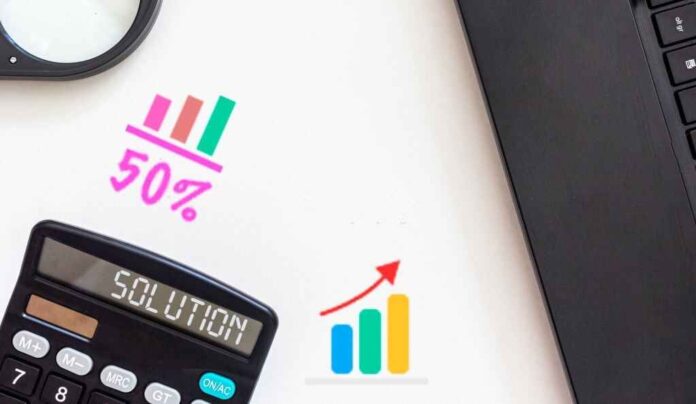If you’re considering working with a trusted third party, knowing your needs and doing your due diligence is important. Individuals often run these types of third parties so that they may be susceptible to fraud and abuse. Here are some ways to find trustable third-party financial solutions that are right for you.
Know Your Needs Third-Party Financial Solutions
Having a well-defined set of needs is key to successful financial planning. Knowing your financial goals will help you find the right third party to meet those needs.
To identify your needs, start with a needs inventory (yes, there is such a thing). The best way to go about this task is to write down your primary goals and then make a list of all the areas in which you would like to improve. This will allow you to focus on those areas of improvement that are most important to you.
The next step is to do a bit of research. This can be done by scouring the internet for articles and books on topics related to your specific needs and goals. You can also speak to people who have successfully navigated similar situations in the past to get a sense of what works and what doesn’t.
This can be a time-consuming task. But it is worthwhile when you consider the benefits it will bring to your life. The most obvious benefit is that it will allow you to better plan your finances for the future, making it much easier to achieve your dreams. Having this knowledge at your fingertips will allow you to take advantage of all the opportunities that come your way.
Ask for References for Financial Solutions
Reference checks are an important part of the hiring process. They allow you to verify a candidate’s qualifications and ensure they have the skills and experience you need for your company. However, it’s also important to remember that not all references are created equal.
As a result, it’s important to ask for a reference check from the right person at the right time. This will save you time and money and avoid having to go through a whole hiring process again in the future.
A good place to start is by asking a candidate for their references’ full names, contact information, and employment history. Then, you can start sending them a list of questions to answer.
Whether you choose to send the reference check by email or phone. It’s vital to ensure that you ask fair and appropriate questions. These should cover all areas of a candidate’s work life, including their performance in the role, the quality of their working relationships, and any issues that could affect their ability to be a team player.
You should also make sure that any potential candidates give you permission to contact their references. This will help to avoid any misunderstandings between the candidate and their references.
The best way to do this is to include a section on all job applications that asks for references’ full names, telephone numbers, and email addresses. Having this information at your fingertips will make it much easier for you to check references and avoid any problems later in the recruitment process.
Conduct Due Diligence
Due diligence is an important component of any business transaction, whether you are selling your business or buying another company. It helps you make sure that the company is a good fit for your needs. That it will be a good investment in the long run.
It also helps you avoid making a mistake that could cost your business. It’s common for buyers to spend up to 45 days doing a due diligence process before closing a deal, depending on the size and type of company they are purchasing.
A due diligence process may be as simple as a phone call or as extensive as an entire investigation into the finances of a company. A comprehensive due diligence process will include a variety of elements and can last from 30 to 60 days or more.
Third-Party Financial Solutions
The process can be difficult and time-consuming on both sides. Despite that, doing your homework and finding trustworthy third-party financial solutions is crucial.
If you’re planning on buying a stock, for example, you should check to see if the current management team is still made up of its founding members or if they have shuffled in new faces to take over the leadership. You should also look into the company’s history and how long they have been around.
In the case of mergers and acquisitions, it’s especially important to conduct thorough due diligence. This will enable you to better understand how well the target company is doing in its industry and its growth opportunities.
In addition to determining the potential financial benefits of an investment, performing due diligence can help you avoid making a mistake that could cost you your money or your reputation. This is especially true in the case of a large, complex, or high-risk company.
Conduct a Risk Assessment Third-Party Financial Solutions
The process of conducting a risk assessment is important to any organization to ensure employees’ safety and health. A risk assessment helps companies identify potential hazards that could harm their workers. It can also help employees make informed decisions about the work they do and the conditions they live in.
A risk assessment is an iterative process that consists of identifying hazards, assessing their impact on the business, and determining appropriate ways to eliminate or control them. It is often a key component of disaster recovery planning and workplace safety management.
Before you begin a risk assessment, you should determine the scope of your project. This will impact the number of resources you need to complete your risk assessment. It can also help you figure out what you are looking to assess. Which will influence your choice of risk assessment methods
Identify Hazards, Risk Factors, and Control Measures
Start by reviewing your business processes and activities to identify potential risks that may affect your employees and how your company operates. This can include anything from a new piece of equipment to how a process is run. You can also look at past accidents or incident reports to identify hazards that may be present in your business.
Use a tool like Lucidchart to break down tasks into their hazards and assets at risk based on your work type. This can help you prioritize your efforts and ensure you are focusing on the highest-priority hazards first.
The risk assessment process is iterative. It is essential to continue reviewing your results as changes occur in the workplace or your industry. This will allow you to remain on top of any new risks that have developed or are becoming more commonplace. It will also help you make sure the control measures you have implemented are effective and that any new hazards are not created.

